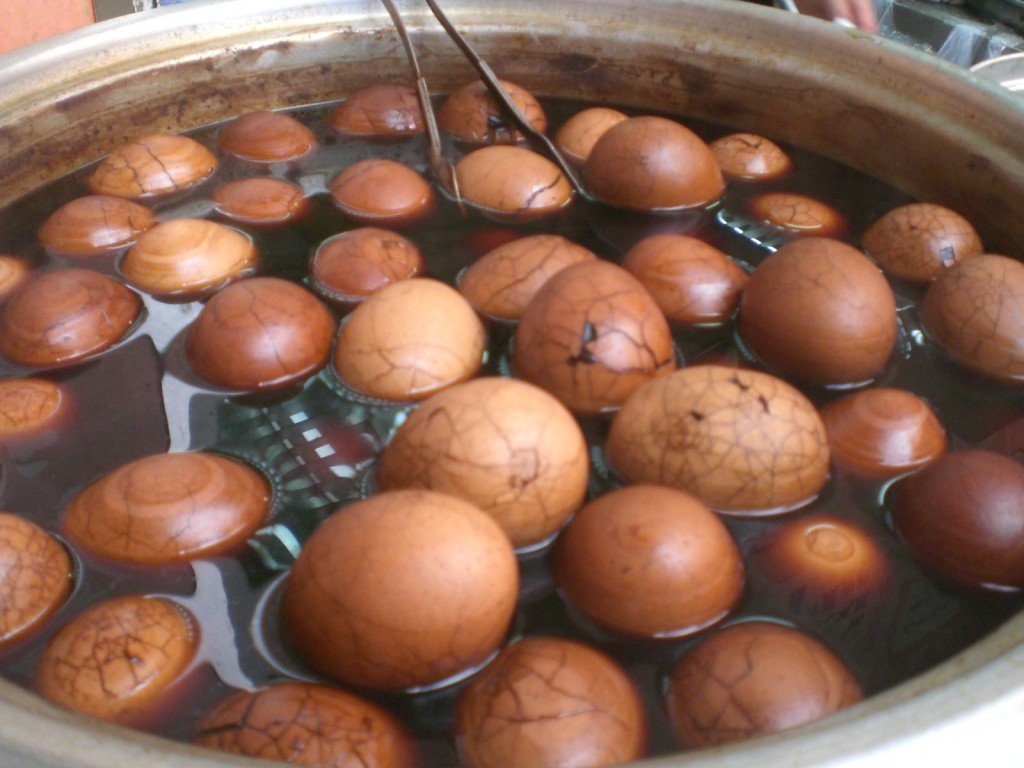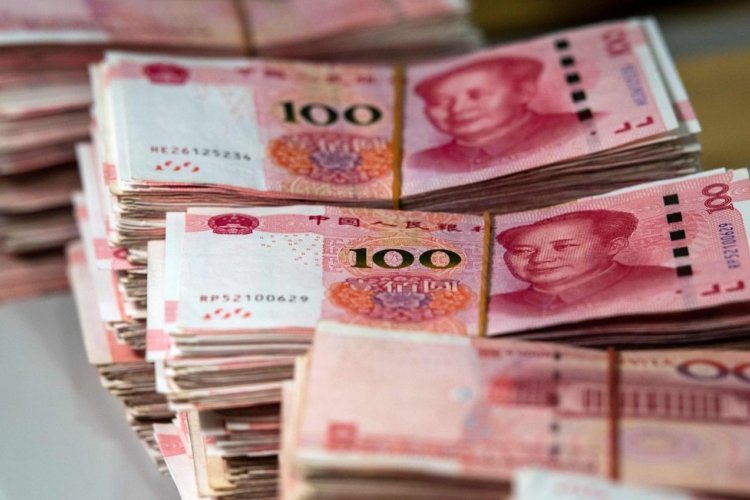Secret Ingredients: The Truth About China’s “Fake Food”
Healthy eating is key to helping our bodies and minds stay alert throughout the day but what if the food you buy is not what it appears to be?
“Fake food” is a term often associated with China, but it’s used to describe a range of different issues: from low quality products packaged as famous brands, to foodstuffs which are adulterated or altered, and even completely artificial commodities like the legendary man-made eggs. How widespread is the problem really? And how much truth is there in the more outlandish stories? We decided to find out.

A Taste of Honey?
Of the numerous food scandals which have dogged China in recent years, the most notorious, and best documented, concerns honey. In 2013 an investigation by Jinan Times revealed widespread malpractice in the Shandong honey industry. Song Xinfang, Chairman of the Shandong Apiculture Association, told the newspaper: “Presently up to 60 or 70 percent of honey on the market is fake.” Tests on four brands of honey purchased from a Jinan supermarket found that two of them had been diluted, one with beetroot syrup, one with rice syrup.
Sugar syrup is cheap, and the resulting mixture is difficult to distinguish from the real thing. Meanwhile honey has become more difficult and expensive to produce. Bees in China, as in the rest of the world, have suffered a catastrophic collapse in their numbers, due to pesticide use and land clearance. Climate change has also led to a surge in the population of Asian Giant Hornets, which prey on honeybees. The problem has become so bad that in some areas farmers have taken to pollinating apple and pear trees by hand.
The poor reputation of Chinese honey has spread worldwide. It’s banned in Europe, and exports to the USA are often “laundered” by being repackaged in Malaysia, Indonesia, India, and Taiwan, according to the American Honey Producers Association. Yet the authorities struggle to get a grip on the situation: testing is expensive, and because honey can be sold as a medicine or agricultural by-product, it can evade food regulations.

Rat and Peas
It’s easy to understand how honey became the faker’s favorite. It’s a high value foodstuff, and to the unwary the adulterated product looks more “pure” than the real thing, since the natural product often contains crystals, specks of pollen, and so on. However it may be less obvious why anyone would want to produce fake peas.
Nonetheless this is a recurring problem in Hunan and Guangdong. Dried snow peas and soybeans are soaked in water, food coloring, and sodium metabisulfite (an antioxidant and preservative). The results of this process are sold as fresh green peas, although they don’t soften properly when boiled, instead turning the water an alarming chemical green; and the coloring used is a dangerous carcinogen.
Meat is of course a lucrative area for faking, and there have been numerous cases of cheap pork being “turned into” more expensive beef, by treatment with anything from beef extract to paraffin wax. In 2013 police in Xi’an seized more than 20 tons of “fake beef” from six workshops. The meat is often sold for use in rousong (meat floss), where the tampering is less obvious. Even more disturbingly, in the same year a gang was arrested in Wuxi for selling rat, fox, and mink meat as mutton, for use in chuan'r.

Going Nuts
Sometimes the tampering is so brazen that it’s hard not to feel a sneaking admiration for the chutzpah of those responsible. In 2012, a Zhangzhou resident bought a bag of walnuts from a street vendor. When the unfortunate man got the walnuts home, he found that they had been carefully opened, the kernels removed, and replaced by lumps of concrete. The shells were stuffed with paper to prevent the concrete rattling, and then glued back together.
The police helpfully released pictures showing the thin white line of glue visible in the tampered walnuts, but it’s hard to imagine this scam being replicated. The effort involved must have been considerable, the reward limited, and the possibility of repeat customers nonexistent.
Cardboard Pork and Plastic Rice
Whatever the truth behind man-made eggs, there’s one fake food tale we can safely dismiss as fiction. In 2007 a Beijing journalist invented a story about a restaurant owner who replaced the pork in his baozi with cardboard soaked in fat and flavoring. The authorities began an investigation, but soon revealed it to be a hoax. Many Beijingers however refused to believe them, and claimed it was all a government cover-up. The meat in street baozi, they said, tastes so much like cardboard that it must be true.
And therein lies the difficulty of assessing the extent of China’s fake food problem. There have been so many scandals that it is easy to become cynical and trust nobody. In this environment rumor thrives, and the internet is a fertile breeding ground. The latest story concerns “rice” made from potato and plastic, being exported around the region. It’s been widely reported all over the world, but I was unable to find a single substantiated case of fake rice being identified. However, “plastic rice” is a term used in the plastics industry to describe resin pellets ready to be melted down and shaped. Perhaps this is the origin of the rumor.

Rotten Eggs
Strangest of all perhaps are the tales of man-made eggs. These stories continue to resurface every few years, but when followed back to their source lead only to a twilight zone of rumor and deceit.
The eggs themselves are supposedly made from industrial chemicals. The shell, like natural shells, mainly consists of calcium carbonate, while the white and yolk are formed from alginic acid (a substance derived from seaweed often used as an additive in food), gelatin, potassium alum (a naturally-occurring mineral used in traditional Chinese medicine), calcium chloride (another food additive), and food colorings. The ingredients are mostly harmless, but of course have little to no nutritional value.
The internet is full of helpful hints on how to identify fake eggs: apparently, the shells are shinier, the white is less sticky, and they give off a faint chemical smell when cracked open. Some people claim to have bought them, although from the description it’s not always clear they haven’t simply got a bad egg.
Others though are more skeptical, and insist the whole story is fake. The website hoax-slayer.com lists it as “Unsubstantiated,” and comments “until more evidence is forthcoming, I’d be consuming this particular egg tale with a grain of salt.”
The claim that it’s possible to make RMB 400 a day attracts particular scorn. On chengduliving.com biotechnologist August Pamplona calculated the costs, and concluded that it may be possible to earn RMB 25 a day by this method. While not exactly a road to riches, that’s just about a viable income in rural China. Even so, if one has the capital to buy industrial chemicals and the equipment needed to process them, surely a better profit margin would be found getting some chickens and feeding them scraps.
However, there may be one sure way to get rich from the fake egg business. A Shandong journalist tracked down an anonymous figure who called himself “the Father of Man-Made Eggs.” This man demonstrated his process, apparently producing a very convincing shell, then injecting it with a white and yolk which were essentially identical except for food coloring.
Of course the Father of Man-Made Eggs does not make a living from producing them himself; he teaches others how to do it, at RMB 800 a time. Ever helpful, he will also sell you manuals and equipment. “Chickens will be made redundant!” claims one advertisement. “Regular consumption can prevent cancer, diabetes, obesity, reduce blood pressure, and enhance the immune system ... Our secret technology is not to be copied without permission.”
“In a word, our new technique will help you to get rich quick!” So the advertisements promise. However, the only people getting rich quick and eating well with the profits are the ones selling the dream of easy money.
Staying Safe
What do you do if you’ve eaten something that isn’t what it should be? We asked Dr. Gao Peng, chief general practitioner at Hong Kong International Medical Clinic, Beijing. Dr. Gao has nearly 20 years of clinical experience, including nine years in the emergency department of one of Beijing’s top public hospitals, where she dealt with many cases of food poisoning.
“Vomiting and diarrhea are the most common symptoms if you eat contaminated food. At moderate levels (fewer than five times within 24 hours) vomiting or diarrhea without fever can be acceptable. Don’t worry too much. Your body has treated itself correctly by expelling the bad food. You can even try to induce vomiting by stimulating your throat with cleaned fingers. Strong antiemetic or antidiarrheal medicine should not be taken too quickly after ingesting bad food. Sometimes you can go through the discomfort smoothly by yourself. But if you have frequent vomiting, diarrhea, a combination of both, serious abdominal cramps, or fever, seeing a doctor will be necessary. You also need to see a doctor if you become thirsty, fatigued, or dizzy, which all indicate the possibility of dehydration.”
“For people who have certain chronic diseases (e.g. diabetes, heart disease, hypertension or kidney disease) and for children, diarrhea or vomiting can be very dangerous. Higher blood glucose and acidosis, heart attack, unstable blood pressure, and electrolyte disorder can be induced suddenly. It’s much easier for children to develop dehydration, which may be even life-threatening, especially for a baby. In those cases, please do not delay before seeing a doctor.”
This article originally appeared on our sister site beijingkids.
Photo: Public Domain, Wikimedia Commons, libraryidol (flickr), Sick Chirpse


